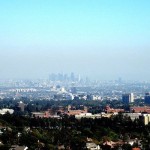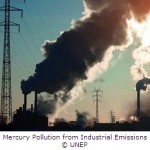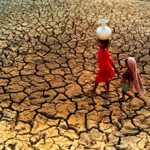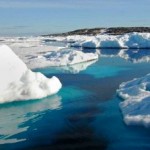 Chicago / Leipzig – Large forest regions in Canada are apparently about to experience rapid change. Based on models, scientists can now show that there are threshold values for wildfires just like there are for epidemics.
Chicago / Leipzig – Large forest regions in Canada are apparently about to experience rapid change. Based on models, scientists can now show that there are threshold values for wildfires just like there are for epidemics.
Large areas of Canada are apparently approaching this threshold value and may in future exceed it due to climate change. As a result both the area burnt down annually and the average size of the fires would increase, write the researchers of the Helmholtz Centre for Environmental Research (UFZ) and the University of Michigan in the December issue of the journal, ‘The American Naturalist’. The strategies for combating wildfires in large parts of Canada should, therefore, be reconsidered.
According to media reports, after weeks of drought, around 1,000 hectares of forest and scrub-land were burnt down in the West Canadian province British Columbia in the summer of 2009 alone. Eleven thousand people had to be evacuated. Are such events on the rise as a result of climate change? This question is being hotly debated by ecologists all over the world.
In July, a group of US researchers led by Anthony Westerling of the University of California forecasted similar changes in the journal, ‘PNAS’. They believe that climate change might result in a dramatic increase in the threat of wildfires in Yellowstone National Park and that the forests might disappear here in the 21st century.
Fires are an important factor in many terrestrial ecosystems. They are a result of the interaction of the weather, vegetation and land use, which makes them very sensitive to global change.
“Changes in the wildfire regime have a significant impact on a local and global scale and, therefore, on the climate as well. It is, therefore, important to understand how the mechanisms which shape these wildfires work in order to be able to make predictions on what will change in future,” explains PD Dr. Volker Grimm of the UFZ.
For their model, the scientists evaluated data from the Canadian Forest Service, which had recorded fires greater than 200 hectares between 1959 and 1999, and sorted these by ecozone. This showed that three of these ecozones in Canada are close to a turning point: the Hudson Plains south of the Hudson Bay, the Boreale Plains in the Mid-West, and the Boreale Shield, which stretches from the Mid-West to the East coast and is, therefore, the largest ecozone in Canada. The closest to a turning point is apparently the Boreale Shield.
In order to check their model and the theory of a threshold value for wildfires, the scientists looked at the fires in this region more closely. Around 1980, the average size of the fires in this part of the provinces of Alberta, Saskatchewan and Manitoba tripled rapidly.
“In our opinion, this is a sign that there are also threshold values for forests above which the wildfire regime drastically changes,” reports Volker Grimm. “It is likely that the Boreale Plains have in recent decades, particularly around 1980, experienced a change to a system characterized by wildfires. This has fundamental repercussions for the environment and the combating of wildfires. Small changes in the fire propagation parameters have a great impact on the size of the fires.” Gradual changes, such as those which can be expected due to climate change, can, therefore, result in an abrupt and sharp increase in the size of the fires.
 The scientists were also interested in the parallels with disease propagation. Prevention strategies, which reduce combustible material, are in a way similar to the vaccinations which are used against the spread of diseases such as the measles. Here too, there is a threshold value above which a disease spreads and below which it falls. Other modelers from the UFZ were, therefore, able to turn this theoretical threshold value into a practical value. With foxes, it was shown that only 60 per cent had to be vaccinated against rabies in order to successfully combat the disease. The scientists, therefore, hope to find out more in future studies which cover both disciplines.
The scientists were also interested in the parallels with disease propagation. Prevention strategies, which reduce combustible material, are in a way similar to the vaccinations which are used against the spread of diseases such as the measles. Here too, there is a threshold value above which a disease spreads and below which it falls. Other modelers from the UFZ were, therefore, able to turn this theoretical threshold value into a practical value. With foxes, it was shown that only 60 per cent had to be vaccinated against rabies in order to successfully combat the disease. The scientists, therefore, hope to find out more in future studies which cover both disciplines.
About the Study:
Source: By Tilo Arnhold, Helmholtz Centre for Environmental Research (UFZ).














